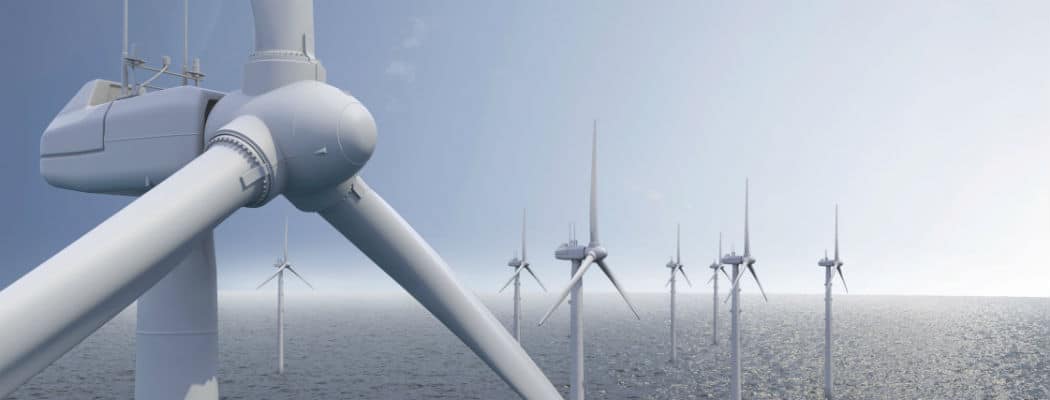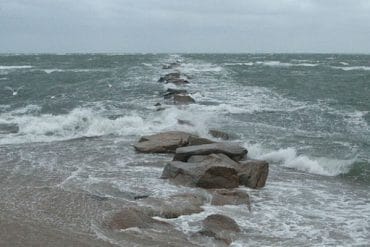Can Nantucket become 100 percent energy self-sufficient?
Two hours off the coast of Denmark, the Danish island of Samso is reminiscent of Nantucket. Forty-square-miles in size, Samso receives approximately 75,000 tourists during the summer months and is rich in history, charming architecture and a small year-round population comparable to Nantucket’s. Despite these similarities, Samso boasts one powerful difference: The island is completely energy self-sufficient.
 Nearly twenty years ago, Denmark’s minister of environment returned from the Kyoto energy talks in Japan and challenged Danish communities to become energy self-sufficient. Only the island of Samso was up for the task. They installed twenty-one wind turbines — eleven on-island and ten offshore — that not only generated enough electricity to power the island, but have since become a source of income for Samso residents who purchased shares in the power that they now sell off-island. Homes on Samso are heated by three massive incinerators that burn rye straw and wheat grown at local farms. New crops of wheat and straw on the island absorb the CO2 emitted by the burning of the hay. By 2030, Samso plans to be entirely free of fossil fuels.
Nearly twenty years ago, Denmark’s minister of environment returned from the Kyoto energy talks in Japan and challenged Danish communities to become energy self-sufficient. Only the island of Samso was up for the task. They installed twenty-one wind turbines — eleven on-island and ten offshore — that not only generated enough electricity to power the island, but have since become a source of income for Samso residents who purchased shares in the power that they now sell off-island. Homes on Samso are heated by three massive incinerators that burn rye straw and wheat grown at local farms. New crops of wheat and straw on the island absorb the CO2 emitted by the burning of the hay. By 2030, Samso plans to be entirely free of fossil fuels.
When it comes to energy, Nantucket could learn a few lessons from Samso. Just this summer, the island set a new all-time record for electricity consumption when demand hit slightly more than 45 megawatts on the fourth of August. That’s enough electricity to power a small city of eighty thousand people. Apart from the philosophical arguments for why the island should work towards being more energy efficient, there is a looming reality that if measures aren’t taken, Nantucket will soon require a costly third electricity line to be strung from Cape Cod. Islanders already pay 15 percent more for electricity than other Massachusetts residents, and the estimated $100 million project to install a third line would only increase those costs.
But according to Lauren Sinatra, the energy coordinator for the Town of Nantucket, there are promising alternatives on the horizon. “One of which could potentially power Nantucket with 100 percent renewable energy within the next ten years,” she says. Sinatra is referring to a federal offshore wind project to the southwest of Nantucket. After the fifteen-year Cape Wind saga, the mere mention of an offshore wind farm can turn many people’s stomachs, but Sinatra explains that this federal project doesn’t face the same pitfalls that sent Cape Wind into a fatal tailspin in recent years.
“These are federal deepwater sites fifteen to eighteen miles offshore,” Sinatra says. “There would be little to no visual impacts. No noise impacts. No vibration impacts. The question is: Could offshore wind offer Nantucket a cleaner option for enhancing reliability and mitigating future load growth than a traditional third cable?”
 Because of Nantucket’s proximity to the deepwater sites, receiving direct energy from offshore wind may be a real possibility. Sinatra has been in contact with Offshore MW, the developer of the wind lease area closest to Nantucket, about the feasibility of connecting a few wind turbines (of thousands) directly to Nantucket. The transmission design is currently being investigated as part of a Site Assessment Plan, which must be submitted to the Bureau of Ocean Energy Management by April 1, 2016.
Because of Nantucket’s proximity to the deepwater sites, receiving direct energy from offshore wind may be a real possibility. Sinatra has been in contact with Offshore MW, the developer of the wind lease area closest to Nantucket, about the feasibility of connecting a few wind turbines (of thousands) directly to Nantucket. The transmission design is currently being investigated as part of a Site Assessment Plan, which must be submitted to the Bureau of Ocean Energy Management by April 1, 2016.
This past October, Block Island broke ground on an offshore wind farm that plans to generate 100,000 megawatt hours annually. The success or failure of Block Island’s project could serve as a good barometer for the use of similar technology off our shores. If the wind farm becomes a reality off the coast of Nantucket, it would be up and spinning right around the time the island is predicted to need the third line, 2030.
Wind power aside, others, like John Miller, the executive director of the Marine Renewable Energy Collaborative, are looking to our surrounding waters as a dependable source of alternative energy in the future. For the last seven years, Miller and his collaborators have endeavored to harness tidal energy in Muskeget Channel, believing that the site could generate up to 20 megawatts of power. “There’s almost no opposition to this,” Miller says. “It’s out of sight and out of mind.” Miller wants to place tidal turbines on the floor of Muskeget Channel, where the current can run up to four knots.
Water velocity is key to the success of harnessing tidal energy, and Miller says that beyond Muskeget Channel, there are other potential locations just a mile and half off the northeast shore of Nantucket that experience four knots of current. From a logistical standpoint, the predictability of the tide, which can be anticipated centuries in advance, holds a lot of extra value for generating alternative energy. Yet despite this inherent value, Miller is struggling to secure the last $300,000 of funding to bring his Muskeget Channel project into reality.
Looking specifically to Nantucket, Miller says waves offer another viable alternative energy option for the island. In fact, just a few years ago, a demo project was slated for the shores of Madaket. “The thought was that if you put a device in the surf, you not only would take energy out of the waves to generate electricity, but you also would take energy out of the waves in terms of erosion,” Miller explains. “We had a lot of support to put a device in the water, but unfortunately the developer decided to pull out and we were never able to do the demo.”
 Solar power is another obvious option for alternative energy on the island. In August of 2015, the airport Commission terminated plans for a two-megawatt solar project with Honeywell when the airport found itself assuming too much of the financial risk. The town energy office is now trying to rekindle that project, and perhaps a second smaller project at the Surfside wastewater treatment plant. Sinatra says the best financial model for the airport site may in fact be a community shared solar project. In such a model, the town would buy half of the electricity from a solar developer at a long-term fixed rate, while the other half would be made available for sale to local residents. Residents would pay a “floater rate” guaranteed to be below the utility’s basic standard rate. The main obstacle in solar energy is finding developable land without environmental restrictions and with little visual impacts. Sinatra says that beyond the airport and the wastewater treatment plant, the landfill could be another viable location for solar energy after it’s capped in 2020.
Solar power is another obvious option for alternative energy on the island. In August of 2015, the airport Commission terminated plans for a two-megawatt solar project with Honeywell when the airport found itself assuming too much of the financial risk. The town energy office is now trying to rekindle that project, and perhaps a second smaller project at the Surfside wastewater treatment plant. Sinatra says the best financial model for the airport site may in fact be a community shared solar project. In such a model, the town would buy half of the electricity from a solar developer at a long-term fixed rate, while the other half would be made available for sale to local residents. Residents would pay a “floater rate” guaranteed to be below the utility’s basic standard rate. The main obstacle in solar energy is finding developable land without environmental restrictions and with little visual impacts. Sinatra says that beyond the airport and the wastewater treatment plant, the landfill could be another viable location for solar energy after it’s capped in 2020.
Regardless of which direction the island takes — wind, tide or solar — it’s unrealistic to think Nantucket will or should become entirely energy independent like the island of Samso. “Samso is literally an energy island unto itself without a connection to a larger grid,” Sinatra says. “It would never make sense for Nantucket to now disconnect from the grid to become self-sufficient as we were before 1996. Rather, wind, tidal, and solar on Nantucket will help relieve load from the grid, and help with local grid reliability — and perhaps offer a cleaner alternative to a third cable. In each case, economics will be a key deciding factor.”
The energy issue can often seem too enormous to tackle, but the fight can begin in our own homes. Whether it be by incorporating energy-saving home automation systems, installing solar shingles on our roofs, or simply switching out incandescent bulbs with LEDs, ensuring a more sustainable energy future on Nantucket can begin with a flip of a switch by the hands of many.
Thank you to Lauren Sinatra for her insights on this complex topic. To learn more about ways to save energy and support a sustainable energy future on Nantucket, please contact her at lsinatra@nantucket-ma.gov.






